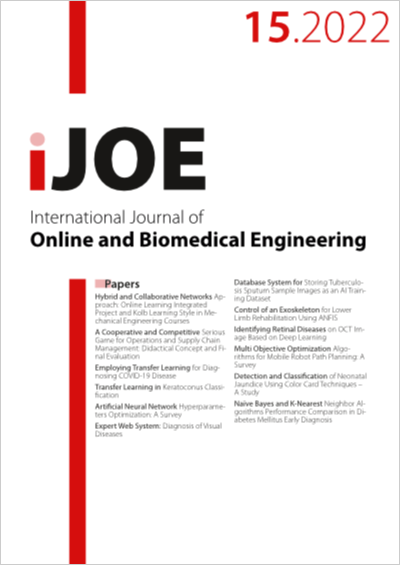Employing Transfer Learning for Diagnosing COVID-19 Disease
DOI:
https://doi.org/10.3991/ijoe.v18i15.35761Keywords:
COVID-19; Data augmentation; Transfer Learning, X-ray; Gradient descent.Abstract
Corona virus’s correct and accurate diagnosis is the most important reason for contributing to the treatment of this disease. Radiography is one of the simplest methods to detect virus infection. In this research, a method has been proposed that can diagnose disease based on radiography (X-ray chest) and deep learning techniques. We conducted a comparative study by using three diagnosis models; the first one was developed by using traditional CNN, while the two others are our proposed models (second and third models). The proposed models can diagnose the COVID-19 infection, normal cases, lung opacity, and Viral Pneumonia according to the four categories in the covid19 radiography dataset. The transfer learning technology had used to increase the robustness and reliability of our model, also, data augmentation was used for reducing the overfitting and to increase the accuracy of the model by scaling rotation, zooming, and translation. The third model showed higher training accuracy of 93.18% compared to the two other models that are dependent on using traditional convolution neural networks with an accuracy of 70.28% of the first model, while the accuracy of the second model that uses data augmentation with traditional convolution neural is 90.1%, while the testing accuracy models was 68.27% for the first model, 87.55% for the second model, and 86.03% for the third model.
Downloads
Published
How to Cite
Issue
Section
License
Copyright (c) 2022 Lafta Raheem Ali, Sabah Abdulazeez Jebur , Mothefer Majeed Jahefer, Bassam Noori Shaker

This work is licensed under a Creative Commons Attribution 4.0 International License.



